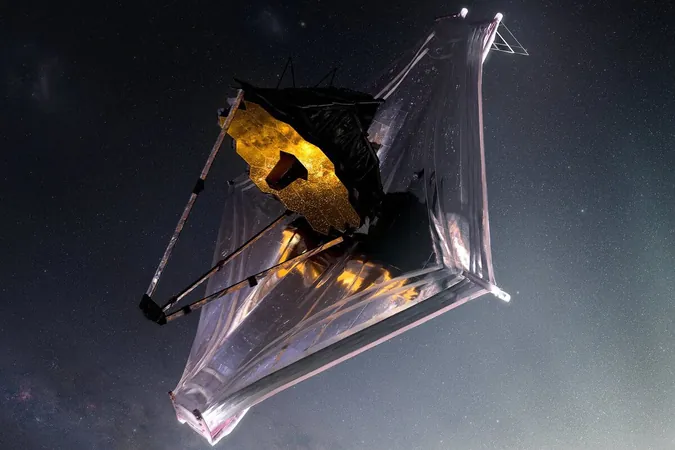
Why the Webb Telescope Can't Focus on Earth, Venus, or Mercury: The Shocking Truth!
2025-06-29
Author: Sophie
The Webb Telescope's Cosmic Power
The James Webb Space Telescope is changing the game in our exploration of the Universe, unveiling stunning images of nebulae, galaxies, stars, and even distant exoplanets. It's like a time machine, peering into the cosmos just moments after the Big Bang, revealing well-formed galaxies that shouldn’t even exist at that stage of cosmic history.
A Surprising Limitation
But here’s the kicker: despite its extraordinary capabilities, there are three inner planets it simply cannot observe—Earth, Venus, and Mercury. You might think it’s strange that a telescope capable of seeing billions of light-years away can’t handle observing nearby planets, but there’s a good reason for it.
The Webb's Unique Orbit
Unlike the Hubble Space Telescope, which orbits Earth, the Webb orbits the Sun, specifically a spot known as the second Lagrange point (L2). This point is located about 1.5 million kilometers (almost a million miles) from Earth, on the opposite side of our planet from the Sun. At L2, the gravitational forces of the Earth and Sun are balanced, allowing the telescope to maintain a stable position while using minimal fuel.
Why L2 Matters
Webb's orbit at L2 is crucial for its primary mission: observing faint infrared light from the early Universe and distant celestial bodies. Infrared light can be read as heat, so Webb must be shielded from bright, hot sources. At this location, it focuses on the dark, deep cosmos while keeping Earth and the Sun at bay.
The Problem With Inner Planets
Considering all this, it makes sense why Webb can’t observe Earth, Venus, or Mercury. If it aimed at these planets, it would have to look back towards the Sun, completely undermining all the engineering efforts dedicated to keeping the telescope cool. The intense heat and sunlight would be detrimental, effectively endangering its operations.
The Dangers of Sun Exposure
Should Webb ever dare to turn towards Earth, Venus, or Mercury, its sunshield would fail to protect it. The infrared instruments, designed to operate at around -225°C (-370°F), would quickly overheat, rendering them ineffective and potentially damaging key components of the telescope, jeopardizing the mission altogether.









 Brasil (PT)
Brasil (PT)
 Canada (EN)
Canada (EN)
 Chile (ES)
Chile (ES)
 Česko (CS)
Česko (CS)
 대한민국 (KO)
대한민국 (KO)
 España (ES)
España (ES)
 France (FR)
France (FR)
 Hong Kong (EN)
Hong Kong (EN)
 Italia (IT)
Italia (IT)
 日本 (JA)
日本 (JA)
 Magyarország (HU)
Magyarország (HU)
 Norge (NO)
Norge (NO)
 Polska (PL)
Polska (PL)
 Schweiz (DE)
Schweiz (DE)
 Singapore (EN)
Singapore (EN)
 Sverige (SV)
Sverige (SV)
 Suomi (FI)
Suomi (FI)
 Türkiye (TR)
Türkiye (TR)
 الإمارات العربية المتحدة (AR)
الإمارات العربية المتحدة (AR)